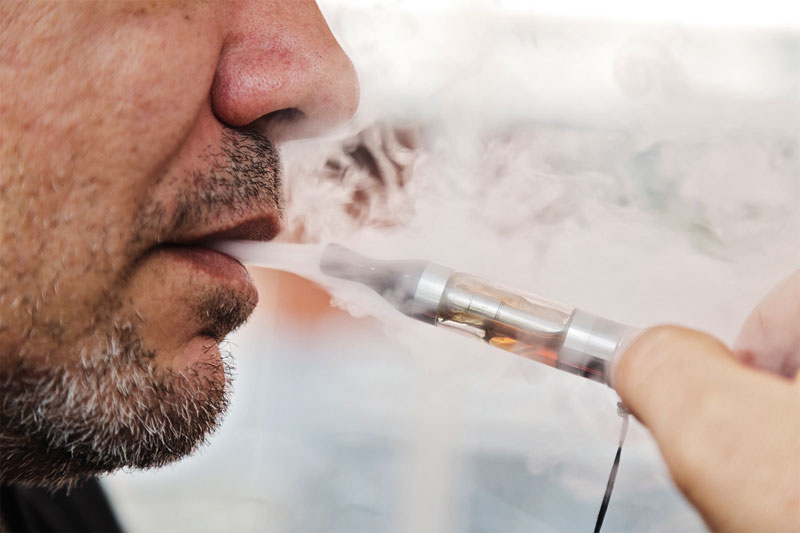
Lee James, General Manager – Sales & Marketing at Nittan Europe, looks at how you can help overcome false alarms caused by vaping devices.
Since 1st July 2007, cigarette smoke has been absent from public buildings in the UK but, according to reports, there is now a new kid on the block for smokers – vaping.
Although many countries are expected to introduce legislation regarding the use of e-cigarettes this year, there are no current guidelines on where they can and can’t be used. Many organisations however, such as public transport, hotels and pubs don’t allow vaping on the premises due to reported problems such as fires caused by charging equipment and smoke detectors being activated by the exhalation from the vapes or e-cigarettes themselves.
One such company to experience these issues is lively pub and music venue, The Frog & Frigate in Southampton. Although vaping is allowed at the venue, owner Derek Gardener has experienced problems – in particular, incidences where vaping has activated the pub’s smoke detectors, leading to disruption of the running of the venue.
A breath of fresh air
Vapes feature a cartridge containing nicotine in a solution of either propylene glycol or glycerin and water. When you suck on the device as you would a normal cigarette, a sensor detects the air flow and starts a process to heat the liquid inside the cartridge so that it evaporates to form water vapour. Unlike e-cigarettes, which most often resemble traditional cigarettes, vapes come in all shapes and sizes and thousands of flavor combinations – from blueberry to marshmallow to single malt scotch! In an enclosed venue where there are a number of people vaping, this can have the same effect as steam on a smoke detector, leading to false alarms.
Although not a new concept – research shows that a form of vaping was used as early as the 1960s, although these were more of a static, tabletop feature – e-cigarettes and vaping have become very popular since the advent of worldwide smoking bans in public buildings and due to the associated cost and health benefits in comparison to traditional cigarettes (a study published in the British Journal of General Practice claims that vaping could save as many as 6,000 lives per million smokers every year). Last year in the UK, sales of e-cigarettes rose by 24% on the previous year with 2.6 million adults using them in the UK alone.
Smoke without fire
In the case of The Frog & Frigate, smoke detector false alarms caused by vaping were becoming a considerable problem in the running of the pub. Generally speaking, a false alarm – i.e. an alarm which has been generated by the fire detection system but not in response to an actual fire – is caused by the Infra Red scattered light technology in the detector being unable to distinguish between smoke and larger size particles like steam and dust.
Despite these issues Derek was reluctant to ban vaping in the pub, but was recommended a solution by installers Fire & Safety Testing, in the form of ‘dual optical’ detectors. Unlike industry standard single optical sensor smoke detectors, these dual detectors use both the ‘traditional’ Infra-Red light to ‘view’ the particles entering the alarm chamber plus blue LED light technology.

By calculating the ratio of these light sources, which operate at different wavelengths, the detector can determine the particle size and thus distinguish between smoke and non-combustion products. As steam and dust are much larger particles than smoke, the detector won’t false alarm but will still remain sensitive to combustion (fire) products in order to generate an alarm. This technology has been employed in Nittan’s Evolution EV-DP smoke detectors.
Since the installation of Nittan’s EV-DP at The Frog & Frigate, Derek is happy to report that there hasn’t been a single false alarm in the venue. False alarms are one of the biggest issues faced by the fire industry and cost the UK in excess of £1 billion each year. For businesses and organisations of all types, false alarms not only cause an obvious loss of earnings but can also impact on customer experience, so minimising the number of false alarms is a top priority for all concerned.
Fire detector and alarm systems are absolutely essential but no one should have to put up with false alarms. If you have a fire detection system that is causing disruption for your customer as a result of false alarms, take action. False alarms, especially from steam, don’t have to be a headache!








